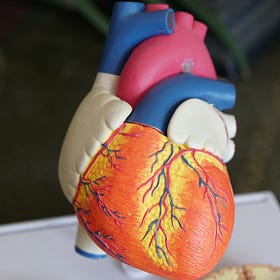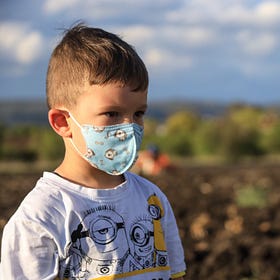The Importance Of The Macrophage In The Immune System
A macrophage could be depicted as a Pac-Man that eats up all the unwanted “ghosts”, but no, it does much more than just that.
The macrophage is one of those immune cells in our body that does quite a fair bit of things without us thinking about it. We’re exposed to so many microbes and virues in the environment on a daily basis, and some of them can penetrate through the skin and mucosal barriers that act as the first line of defence to those foreign invaders:
The Three Layers Of Our Body’s Immune Defensive Mechanisms Explained.
Many of us tend to think of the immune system as a system of cells that work together to protect the body from any viral or bacterial attacks. I’m not saying that’s wrong — but it doesn’t paint the full picture of what’s going on. A conversation with a colleague who specialised in microbiology brought me to the understanding that we actually do have
The macrophages exist in our body as part of the immune system. As an article at Duke University does mention,
Macrophages are known as the Pac-Man of the immune system and form the body’s first line of defense against invasion — they indiscriminately engulf and eat most anything deemed a dangerous trespasser, whether it’s a bacterium or cellular debris from deceased tissue.
And that’s where we can consider the macrophage as a Pac Man type of cell. They engulf any other type of cell or cellular debris from deceased tissue and then “eat” and digest those biological components down into simpler constituents.
That’s the primary purpose of the macrophage cells in the human body. However, we do have to be aware tthese macrophage cells don’t just have one singular function.
They can digest cholesterol particles too.
They are able to engulf and digest low density lipoprotein (LDL) particles:
Now, Seriously, What's So Tricky About Cholesterol?
This article is the final part of a 3 part miniseries. The first 2 parts can be found at: Medical science has been talking about cholesterol and its links to heart disease for years. People who are at risk of heart failure are invariably prescribed medicines such as
However, if those LDL particles were oxidised (oxLDL), the CD36 receptors on the macrophages would signal the macrophages to consume the oxLDL uncontrollably, which turns them into fatty foam cells that settle onto arterial walls and form the basis of atherosclerotic plaques.
And that isn’t good because it can lead into the development of heart disease — which invariably has an immunological link to it because of macrophage activity.
They can digest extracellular debris.
When we injure ourselves, there will be some cells that end up dying. A cut on our skin causes some fibres on our skin to get frayed, for instance.
The macrophages are responsible for clearing out those dead or damaged fragments so that new connections can be synthesised to stitch up the damage:
The Oddities Behind Wound Healing In Our Bodies
In this physical world filled with a ton of atrocious human clumsiness, just about anything is possible. We don’t have to look very far to find prizes such as the Darwin awards to celebrate human stupidity: They recognize individuals who have supposedly contributed to human evolution by
There are so many red blood cells (RBCs) in the body that function as oxygen transporters. These RBCs have a life span of 110–120 days on average before they die.
Of course, the macrophages are there to digest the dead RBCs, and in doing so end up storing the iron in the haemoglobin proteins that the RBCs contain to transport oxygen around the body.
They are controlled by signalling mechanisms
There are complex biochemical signalling mechanisms involved in getting these macrophages active. These guys are consistently on the alert, much like an army battalion that is taking a defensive stance in war.
The battalion does not needlessly go out to attack — but it is on alert to defend itself from any attacks.
Unfortunately, sometimes, the battalion may receive the wrong information and end up opening fire on innocent or friendly targets.
That is what happens in the case of an autoimmune disorder — the problem with rheumatoid arthritis arises as a macrophage infiltration issue, where the macrophages are given misdirected orders to attack benign joint cartilage that has otherwise been earmarked as a threat to the human body.
And of course, signalling errors can cause the macrophages to hold on to their iron content instead of releasing them back into the blood, which could lead to anaemia being related to an improper functioning of the immune system.
We cannot live without these macrophages.
These cells are responsible for so many different functions in the human body.
But yet, it isn’t easy for us to get all these cells to only do what we want them to do.
Sometimes they end up doing more things than necessary (or even overdoing it), and that results in the development of health problems for different people.
Do feel free to check out Nutrients That Support A Healthy Immune System to see how our diet plays a part in maintaining immune functions!
Nutrients That Support A Healthy Immune System
In Making Sense Of Our Immune System, I do highlight the main problems that our immune system faces as its functionality declines based on poor sustained lifestyle habits that we are subscribing to. In that article, I also do highlight what aspects of can go wrong with our immune systems without us realising it, even as we seek to support our immune syst…
Also, do feel free to share this article and hit the “subscribe” button to get more updates about the science concepts in nutrition and health, all deconstructed nicely for your convenient perusal!








